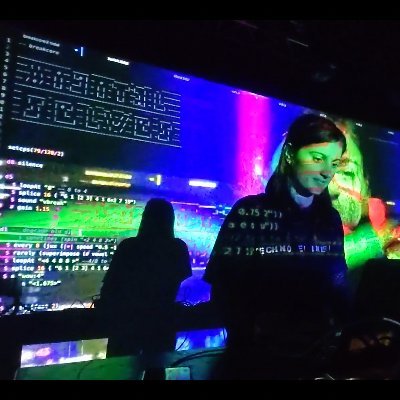29/08/2023
spin stitch sound “kick”

Image showing snippets of code used during live-coding music in TidalCycles.
Each of these lines following this introduction is a single pattern of code using TidalCycles – a language used for live coding, where artist-programmers create time-based art (e.g. music, visuals, choreography) by writing computer code, usually in front of an audience.
In live coding, computer language is a material for exploring ideas through patterns. These patterns of code are designed to be compiled, recompiled, degraded, deleted. The dance of a bee, the vibration of a voice, the contraction of a lung, the metastability of a brain, the crystal oscillators regulating every computer – oscillations provide the pulse for rhythm and for pattern. For more info on how to run these patterns see Github.
`spin`
`spin` spins a layer up a pattern the given number of times, with each successive layer offset in time by an additional `1/n` of a cycle, and panned by an additional `1/n`. The result is a pattern that seems to spin around.
`orbit`
An `orbit` is a global parameter context for patterns. Patterns with the same orbit will share hardware output bus offset and global effects, e.g. reverb and delay. Numbers higher than the maximum will wrap around.
`room`
`room` is a pattern of numbers from 0 to 1. It sets the level of reverb.
`cutoff`
`cutoff` adds a low pass filter and controls the value at which certain frequencies are blocked.
`resonance`
`resonance` specifies the resonance of a low-pass filter.
`binary pattern`
A `binary pattern` is composed of 1s and 0s which correspond to “on” and “off” states. They produce rhythms based on these 1s and 0s. A `struct` constructs this manually.
`sew`
`sew` uses the first binary pattern to switch between the following two patterns. The resulting structure comes from the source patterns, not the binary pattern.
`stitch`
`stitch` uses the first (binary) pattern to switch between the following two patterns. The resulting structure comes from the binary pattern, not the source patterns.
1 —
2 <br>
3 An implicit rhythm exists within binary,
4 computer’s dichotomy of ones and zeros.
5 As the transistor flips its switch it makes
6 silicon mappings of the physical world.
7 <br>
8 As the seconds or hours spin past
9 oscillating through pulsating and needing of rest
10 caught in-between alternating states
11 burnt ice evaporating and condensing.
12 <br>
13 Amicable pale satellite, hung
14 far away but keeping time
15 pushes and pulls you outward, inward through
16 fluctuating states of awake and asleep.
17 <br>
18 The holding and the letting go, or
19 the spin-orbit resonance from tidal locking
20 the sky looks a little different tonight
21 holding out for a collapse and reemergence.
22 <br>
23 —
Your Comments
Explore more

0 Comments